September 17, 2017
Martha O'Kennon
The weather is busily practising up for the new season -- cool nights, hottish days. The goldenrod began brightening up the dark corners of the "garden" a couple or three weeks back, and is still a favored lunch spot for bees and wasps. Not to mention the ambush bugs, which seem to go for days in situ and then, just as you thought you had discovered a permanent colony, Poof! They've disappeared and must be setting up shop elsewhere.
Here are some of the brighter faces of the fall so far. This pinkish-violetish colchicum is back for the first time in years. Its fellows (a patch of 3 or 4 flowers) have only the standard 3/6 petals, but this one is called waterfall because of its many many petals. In the shade, the euonymus leaves are beginning to redden, and soon the whole little tree will be ablaze (that's probably why it is sometimes (always) called "burning bush". Third, asters of many shades hang down onto the surface of the pond. Here they are accompanied by pink water lilies.
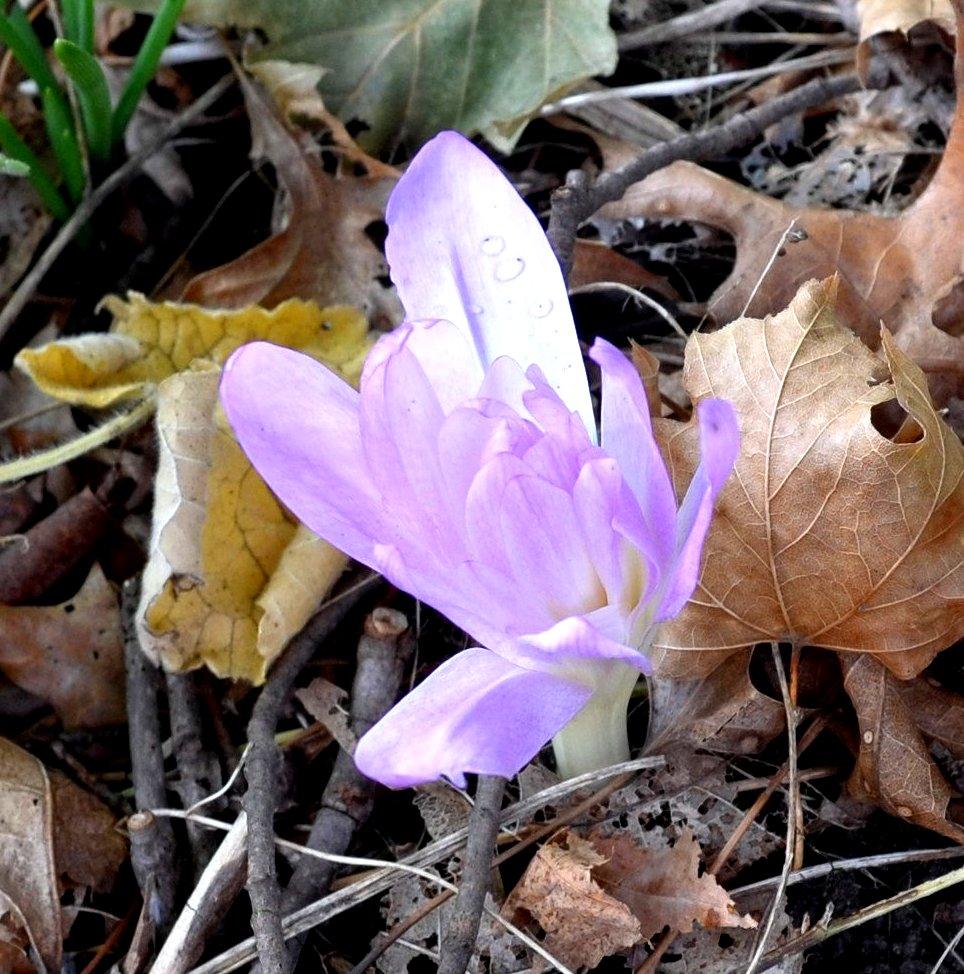
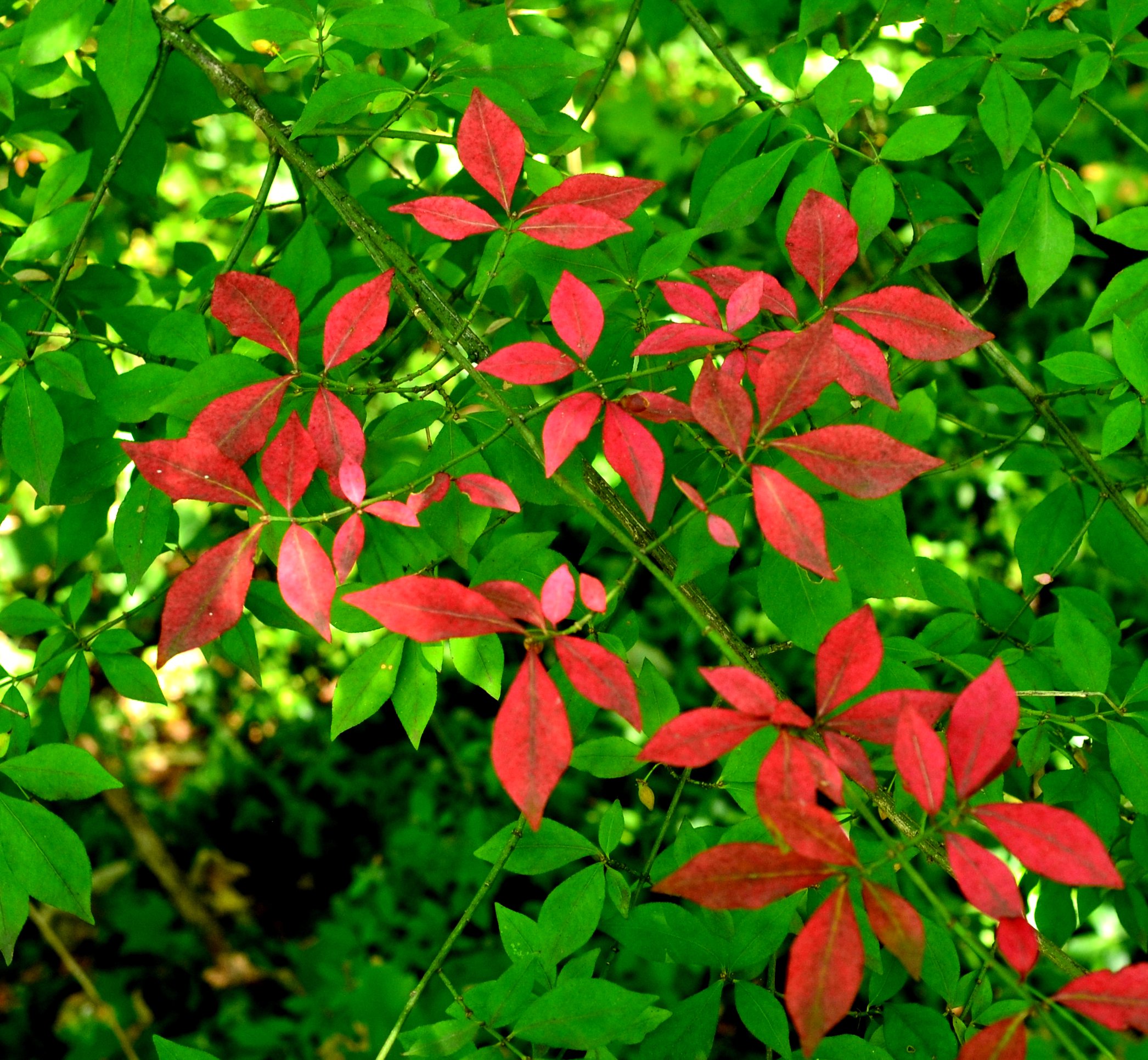
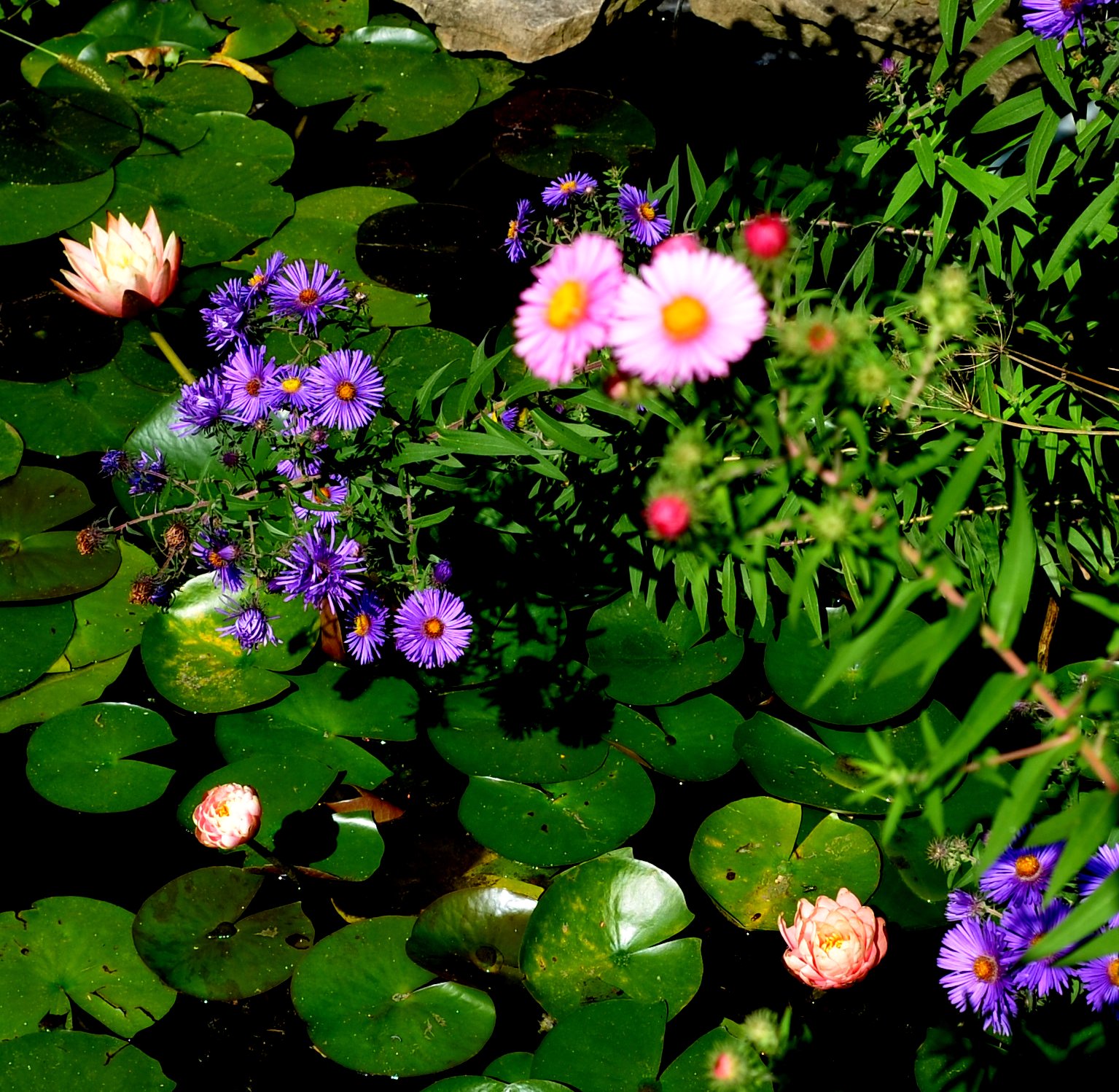
Remember that there is information in the name of the file for each image. You can see it by mousing over the image - look at the lower left of the screen. Or you can click on the image to get to the (usually) larger image. Then the info is displayed in the address line above. Sometimes the second click will actually display a different view of the original image.
Our usual faithful "carpenter" ant; A green aphid must have come from somewhere; and a barklouse, normally almost invisible, now easily perceived and identified (fairly well) in a well-lit spot.

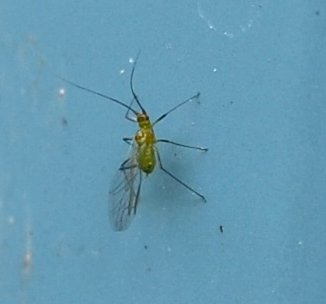

Maybe a member of genus Andrena? I am so bad at ID'ing bees. But I know a honeybee when I see one - like this one on a pale pink Aster flower. This shiny tiny bee must be one of the greenish sweat bees.
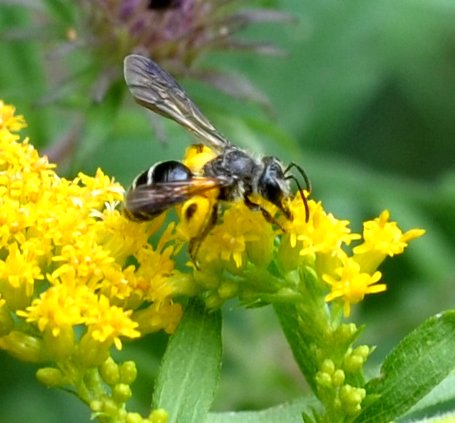
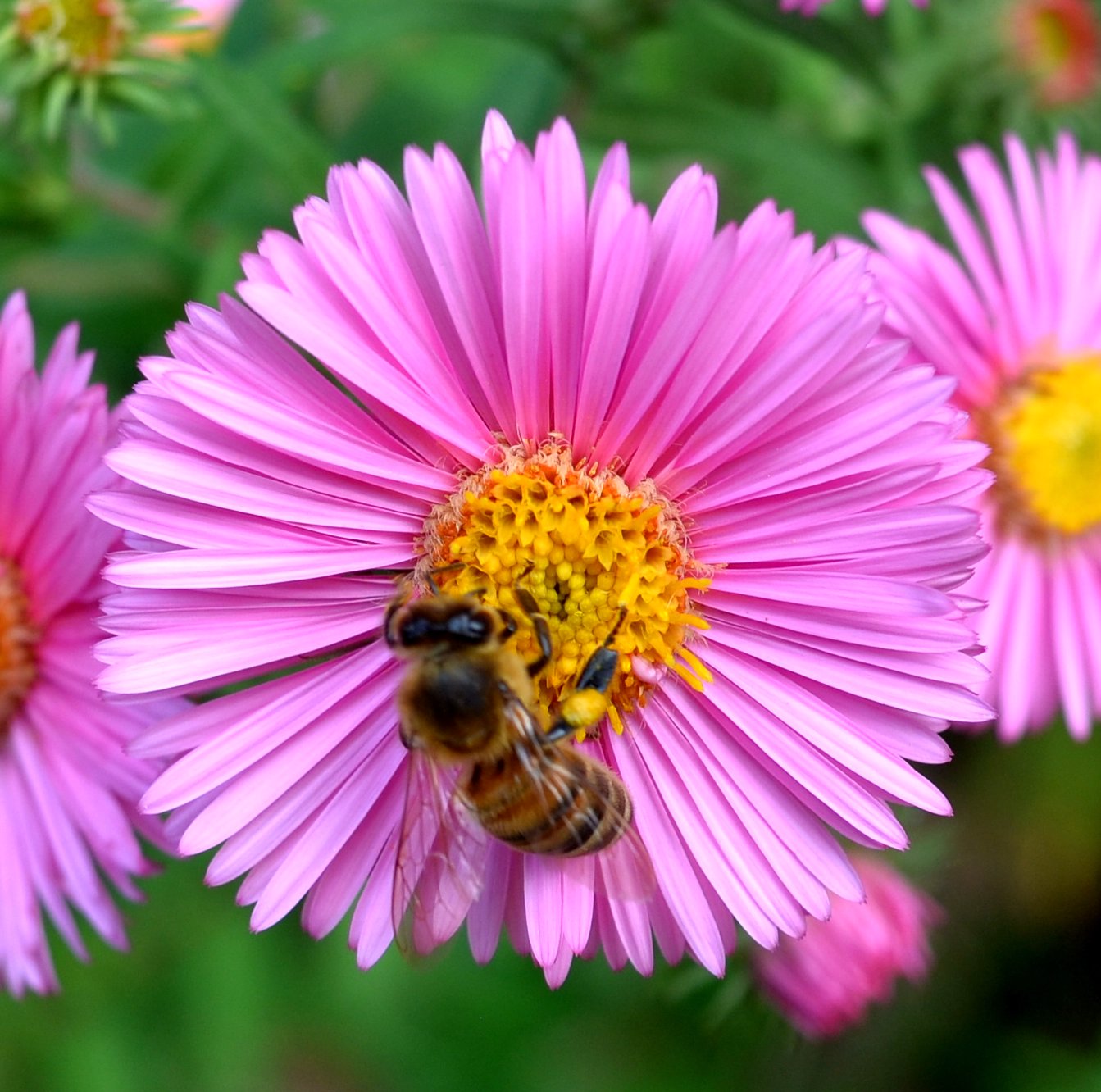
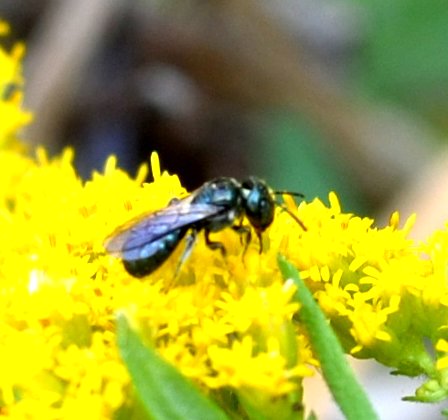
Here's an old friend, the Spotted Cucumber Beetle. An Asian Lady Beetle. And a pair of Locust Borer Beetles, at it again...
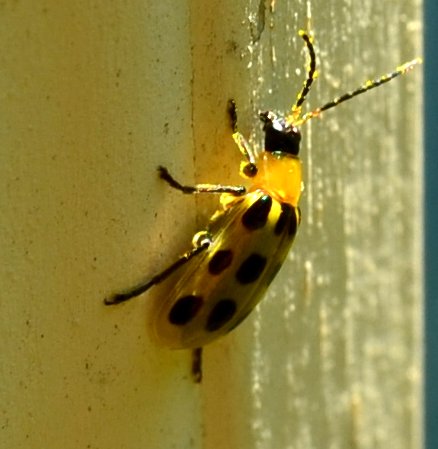
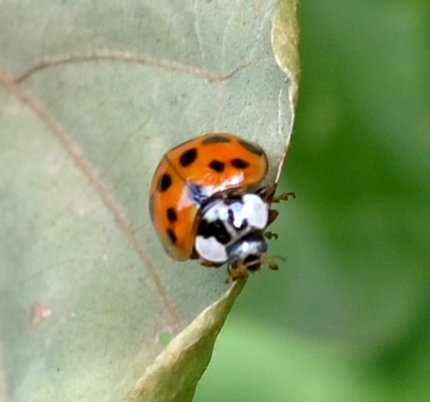
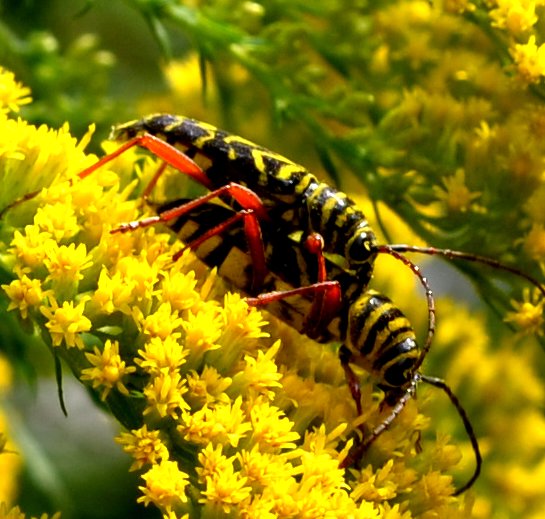
Some more Ambush Bugs. They are so very tiny that when the wind blows the goldenrod, it messes up an awful lot of pictures. In this image, that's my left thumb holding onto the flower. The third image is of a tiny Assassin Bug nymph.
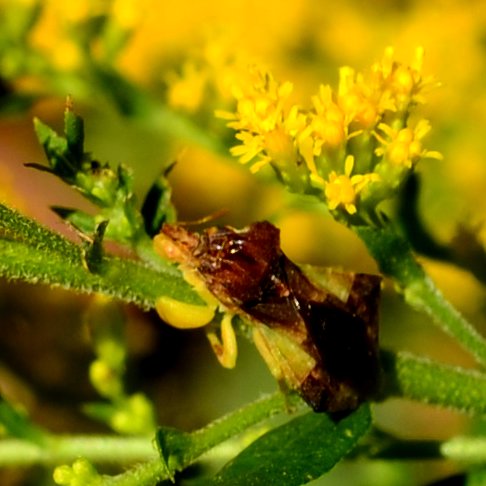
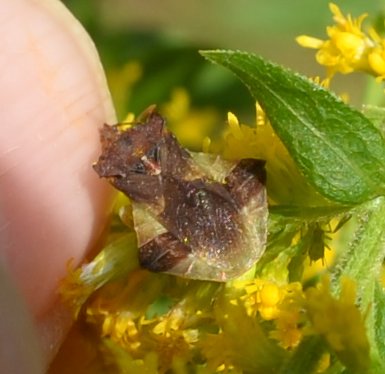
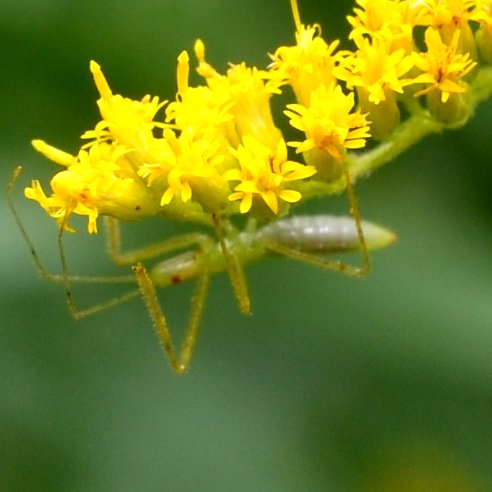
There were a few leafhoppers around. Here is an old one, but it still doesn't have a name - any suggestions? The next one (two images) is probably a Spittle Bug, but it's hard to say when the hind leg spines don't show up.

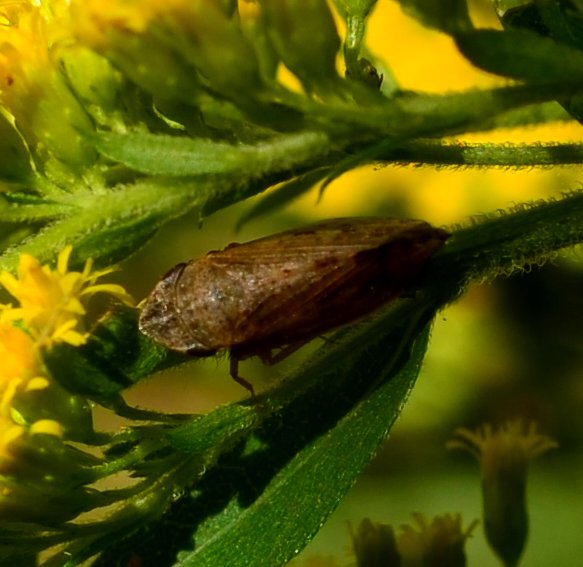
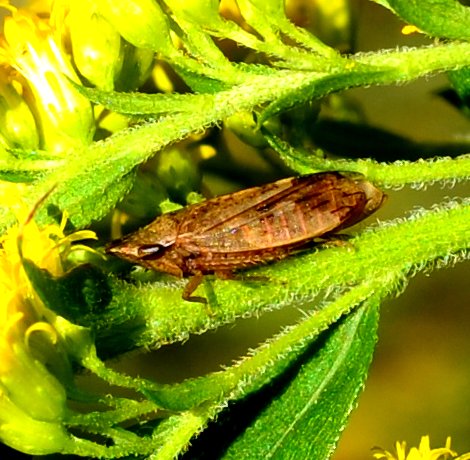
This mottled bug was on the shady side of the shop. This is the one that might just be the instar before becoming the Marmolated Stink Bug. And finally that old familiar reddish Stinker. None of these has much odor associated with it, according to my nose.
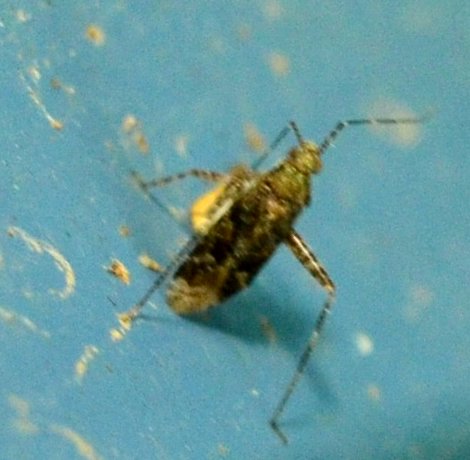
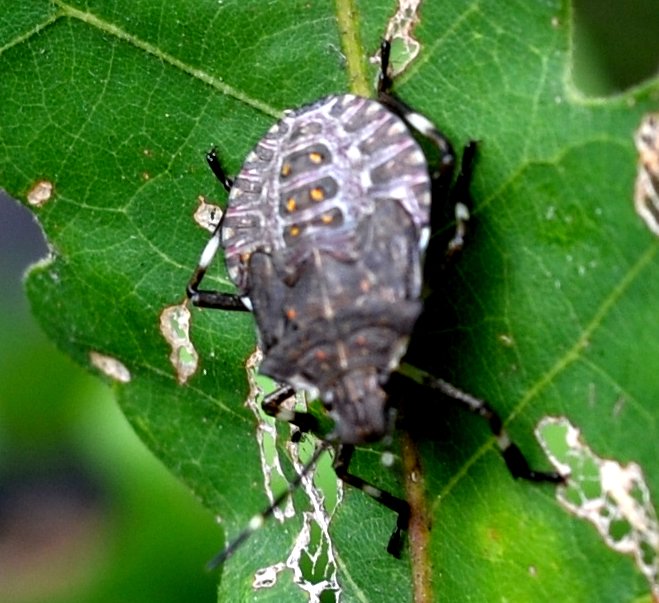
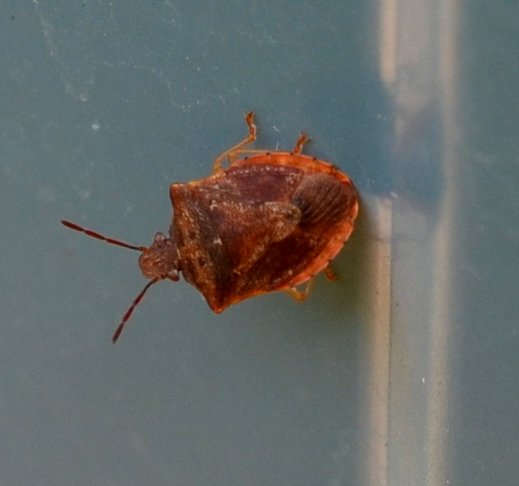
The thread-legged bug, Emesaya brevipennis, really seems to feel at home here on the shop wall (eastern side. This centipede was inside the filter box for the pond pump when I opened it to clean. And this Jumping Bush Cricket has been around for a few days, appearing in many places within a short period of time.

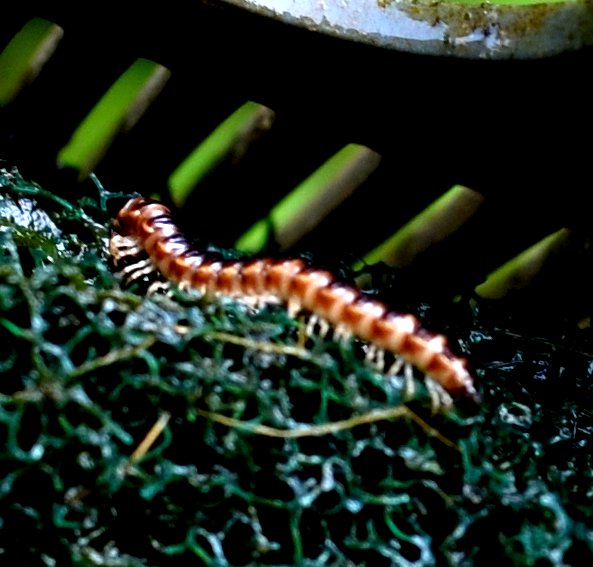

You may not think that a picture of the result of cutting back these Echinacea blooms as soon as they are spent is worthwhile, but look: Some tiny buds have developed on the lower branches. In the next shot, an algae bloom has turned the pond water quite green. I'm working on it with some extract of barley straw. I'll tell you if it ever works! Finally, these perfect little eggs were laid by someone on a smallish red bud leaf.
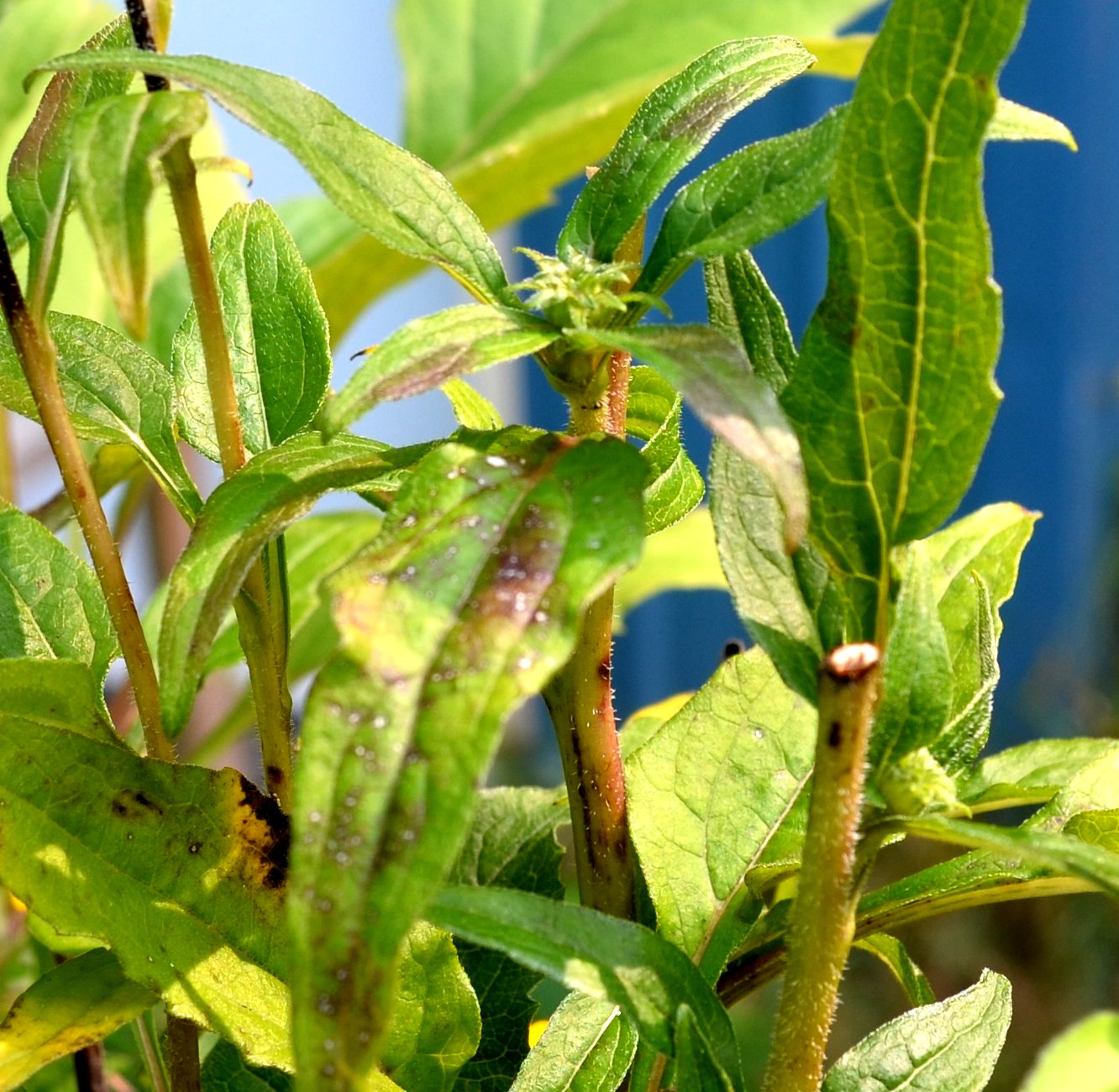
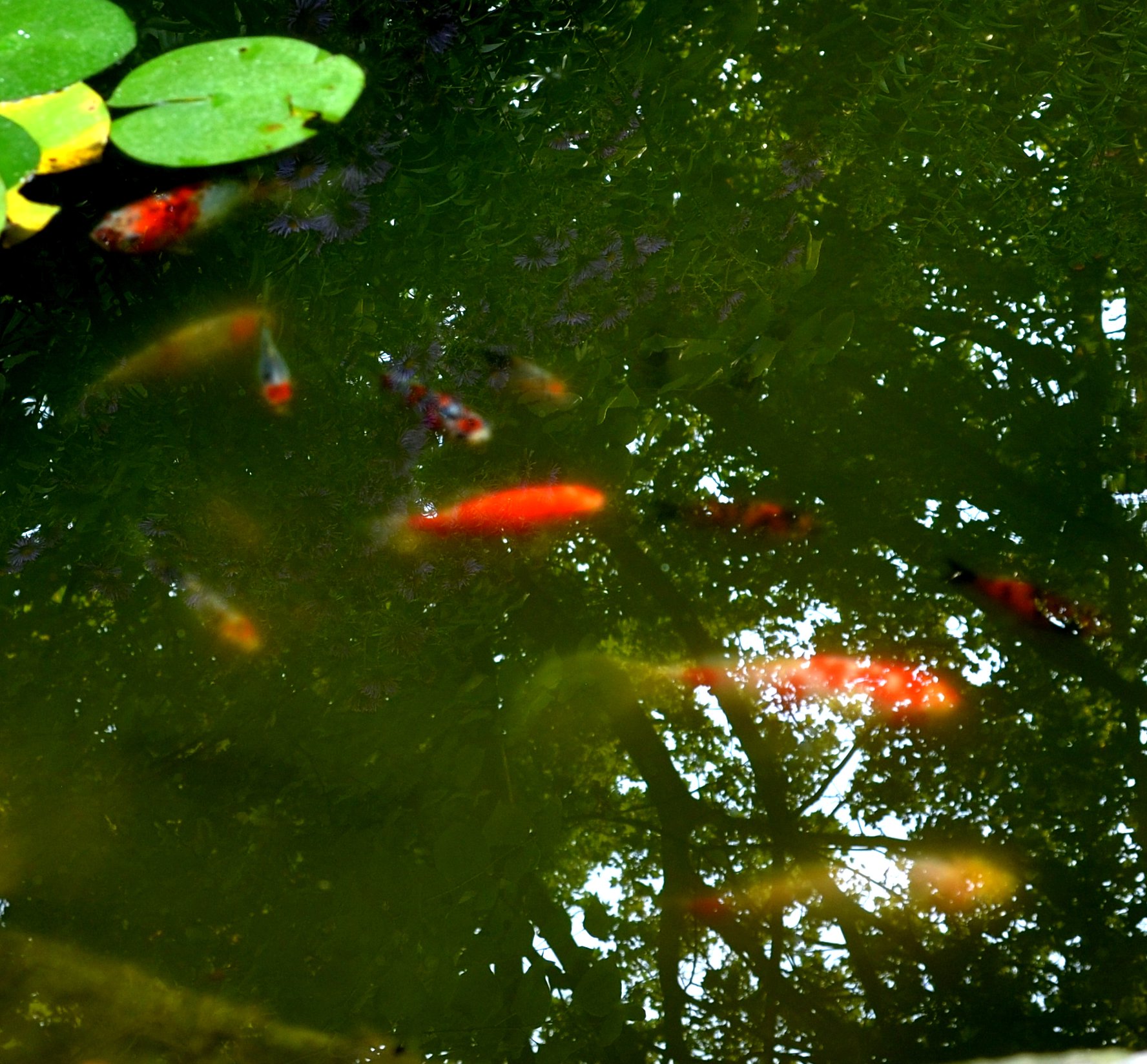
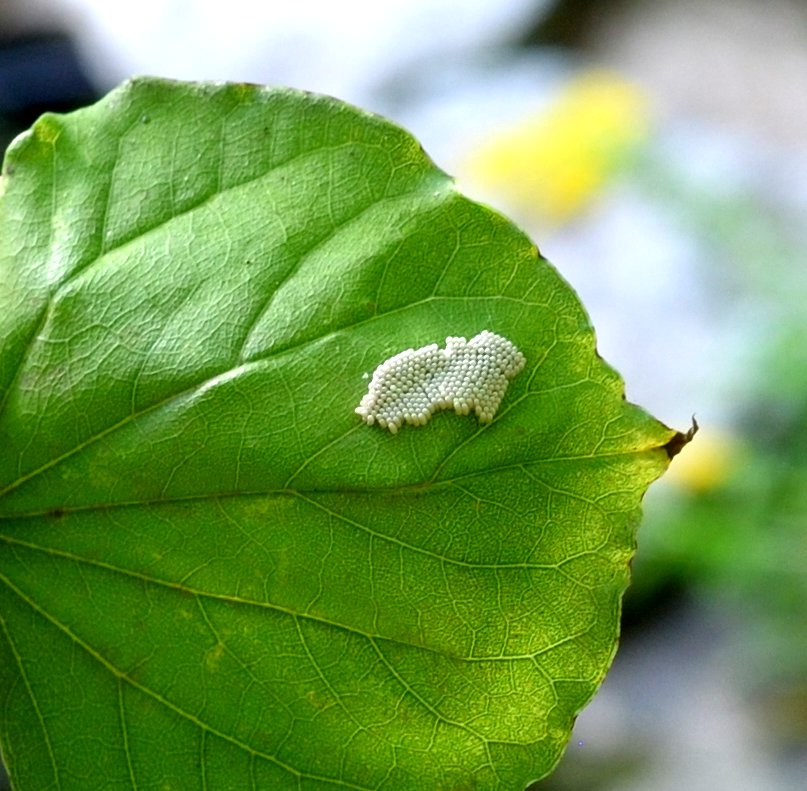
The flies are here! First off, a tiny yellowish-green one on the shop wall. I think I'm remembering this next one right, as a Lance Fly. And the third image is of a metallic copper bodied fly.
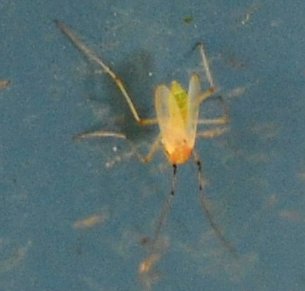
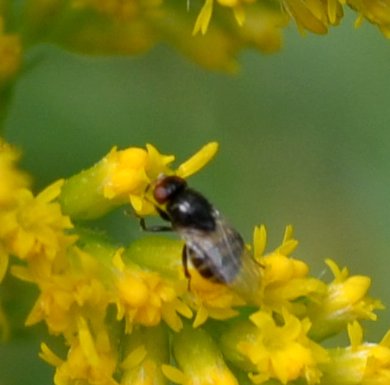

This mosquito looks to have just filled up on O++(the blood group preferred among computer scientists). They are so annoying, but I must admit, sometimes I forget they are there until they have filled their tank. Then you see another long-legged fly. And then what seems to be a midge with some exotically patterned wings.
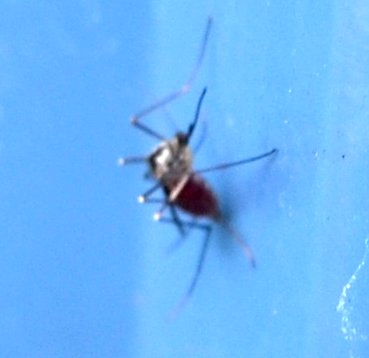
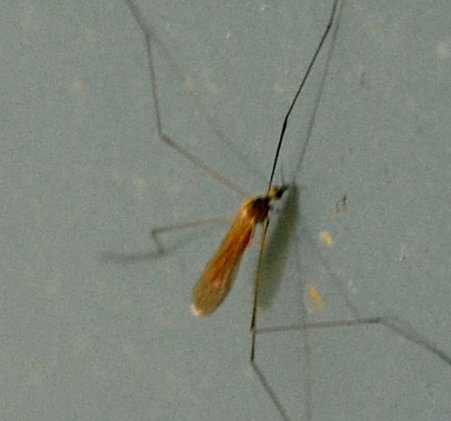
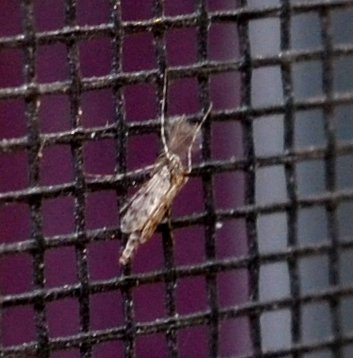
Another midge looks to be a male, what with its fuzzy antennae. Don't mention this to the others, but I didn't take many fly pictures this week. I did get a couple, though, of hover flies. My favorites! The second fly in this row is one of the hoverers! And of course, it is getting drunk on goldenrod nectar, or maybe eating the pollen. The rather large fly at the end of the row is one that lays its eggs on the surface of the pond, from whence its larvae come to eat decaying matter in the water. Its name is Helophilus fasciatus. There is some debate as to whether the hover flies are good pollinators or not. I would guess that to answer that question one would need to see how much pollen they eat compared to nectar, and maybe lots of other factors. Anyway, they are so lovely we would also have to look at whether their contribution is more than their detriment.
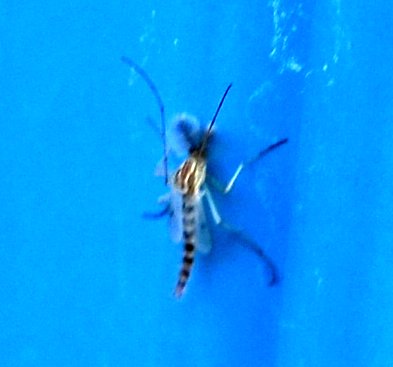
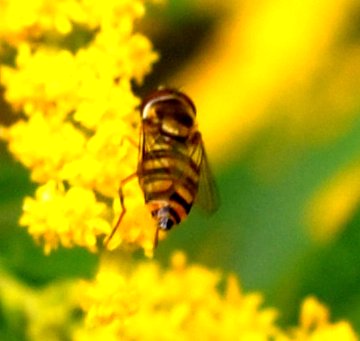

Sorry about the flies! But there were quite a few new moths. Here are two views of a pretty moth.
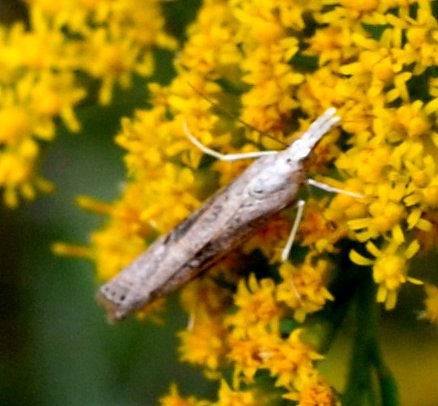
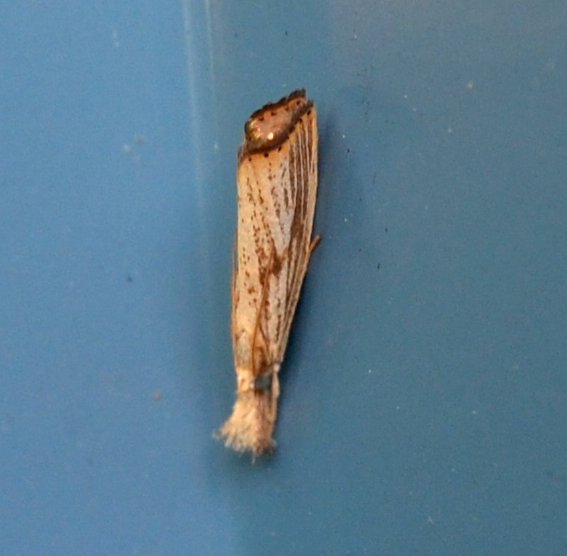
These first two images are probably of the same moth. But I'm quite worried about this white moth who seems oblivious to the crab spider lurking in the plant.
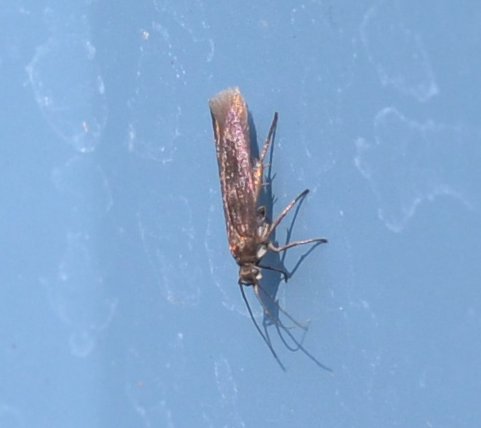
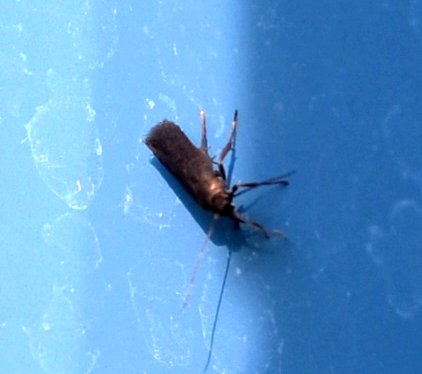
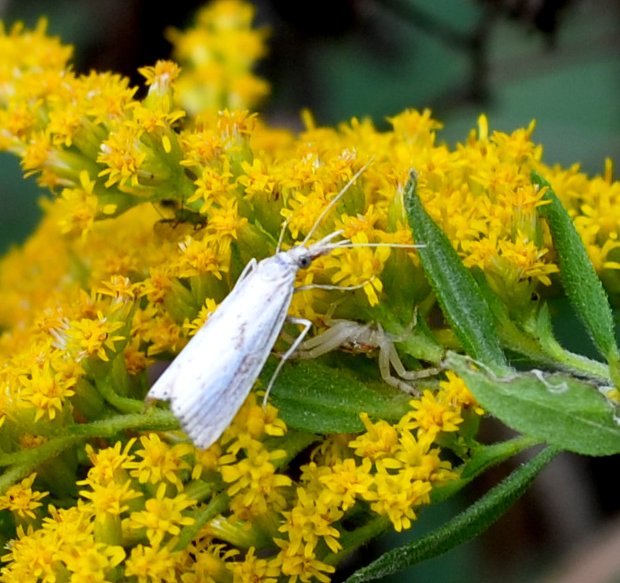
Here's your scorpionfly of the week. Then we have this Common House Spider working on some unknown prey. And a Grass Spider without its sheet web.
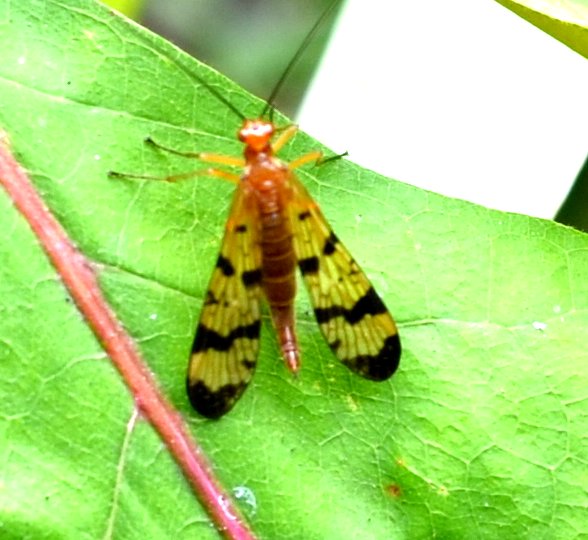
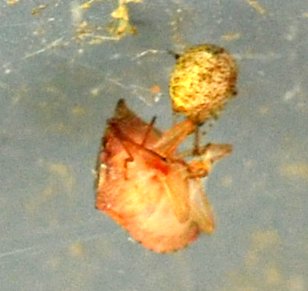
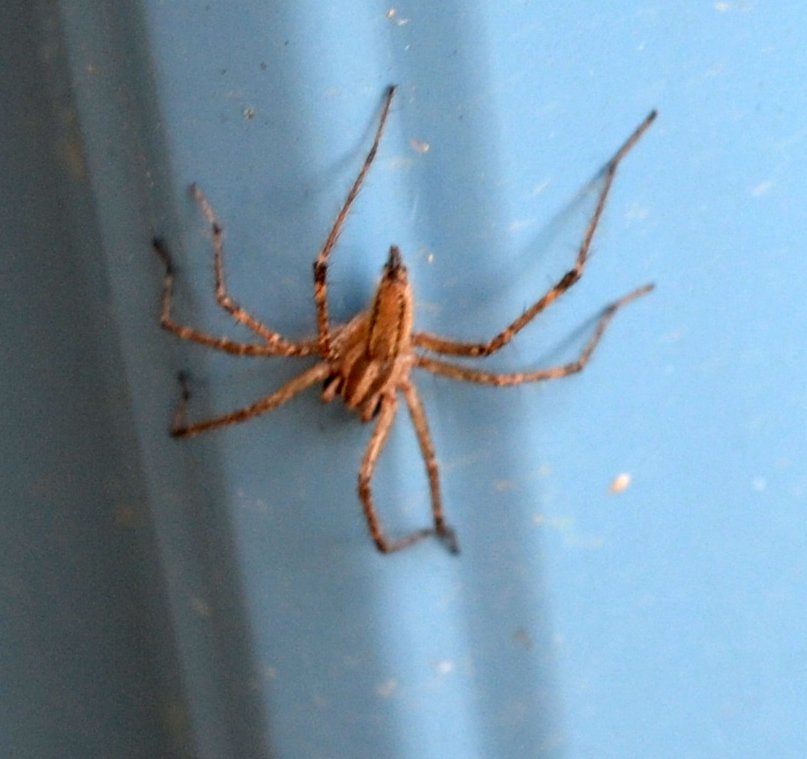
Here is a jumping spider, Naphrys pulex. And a mystery spider.
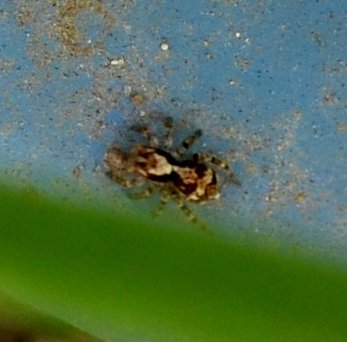

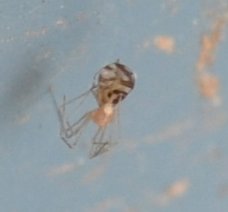
Right on the front porch, a Cross Orbweaver has made a lovely hand-woven web. Here, taken from the porch looking outward, are a couple of photos of the spider from different views.
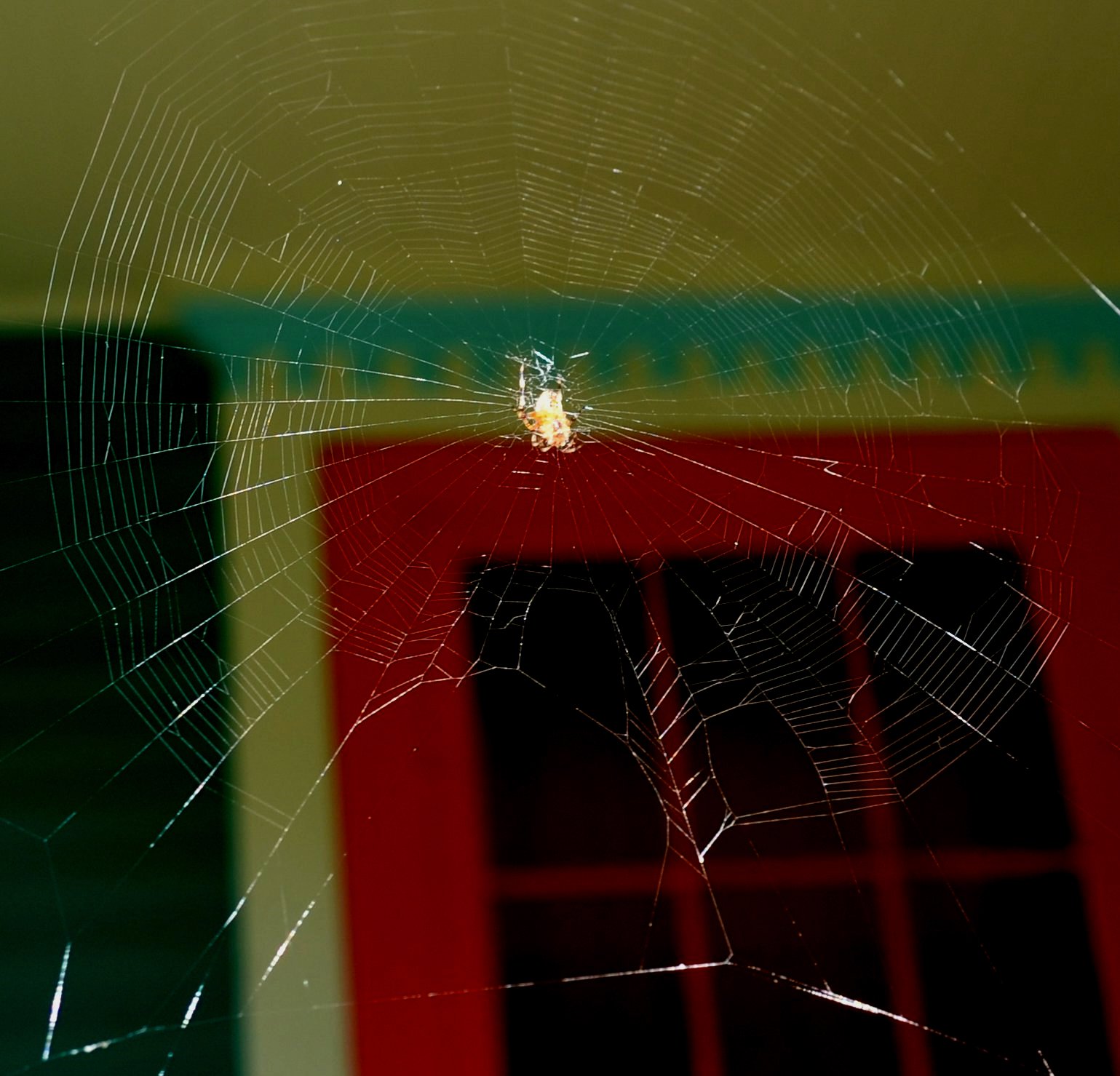


Behind the pond, while I was looking into the redbud for treehoppers, a baby toad was either just getting into the water or out of it. We seem to have had something hatching out of the pond almost every day for a couple of months. The good news is that Froggy the green frog has been here for yet another week. We can but hope that he/she will stay with us for summers to come.
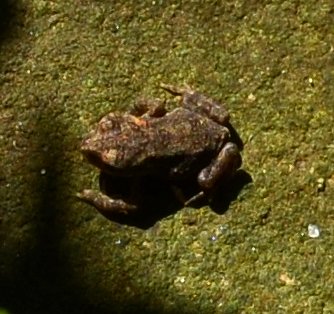
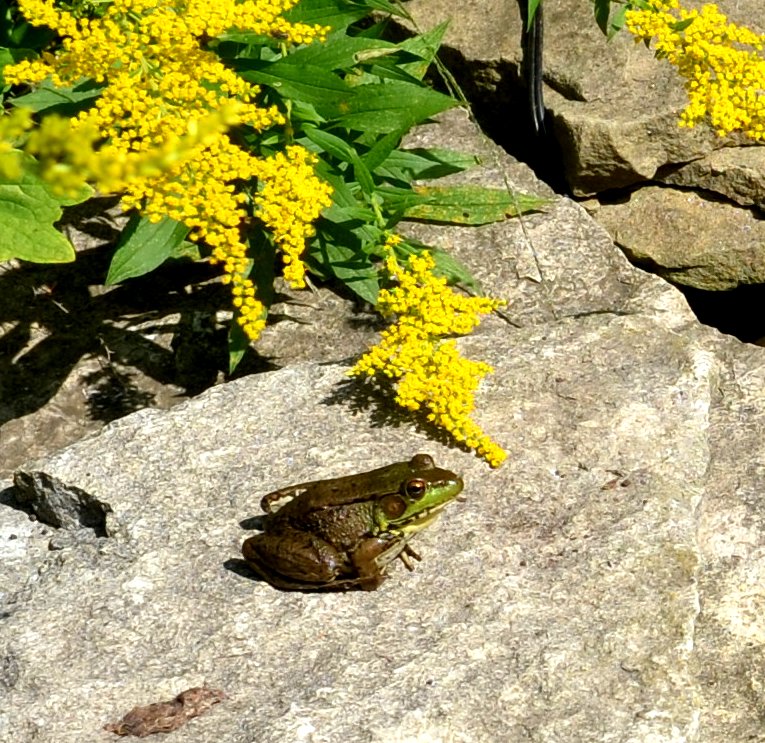
Last week we had quite a display of wasps who visited the Goldenrod Bar. Most of those kinds were still here this week. One thing that intrigues me is, where do they all come from on their route to here? I have never seen so many Northern Paper Wasps (Polistes fuscatus) as this in any other year. They seem to be tending towards a darker variant. Maybe they are a different species but I'm not that up on the Genus. I find them extremely lovely and vivacious. Let's have another practice session - how to tell the boys from the girls? In this first image, the wasp's antennae are curly at the ends, and if you carefully count the segments in the abdominal section, not an easy task, but I'll help you out. The tiny little pointy segment at the end of the abdomen counts as 1, the next segment is also very hard to make out, but if you will click on the first picture, you will see the copy that I've marked up so that you can tell the 7 segments. If it had been a female, there would only be 6 of them. Now look at the next wasp. This one is much redder than the other one, but we're just looking for evidence that might help you determine the sex of your wasp. The second one's antennae are curved but the real giveaway is the "shield"-shaped figure on its face. Female paper wasps don't have this kind of face. One thing we haven't done recently is to compare the "Northern" and "European" species, they share a lot of design details. Here is a female of the European Paper Wasp, Polistes dominula (the species name really does have the meaning of "dominatrix"). Look how similar the pattern down their backs is to the markings on our male Polistes (Even the big red dot on the female northern looks like the white dot on the European female). The face on the female European is roundish, nothing like a shield. If you scrabble around a bit comparing the Northern with the European, it seems that they have roughly (and closely) the same patterns and number of segments. They really are evolutionally very close! So if you were to guess that a female Northern has a round patch on her face, you would be so right! By the way, you may be wondering if all the wasps sting. And the answer would be NO!. Only the females sting. So don't go chasing them with a broomstick - you would be priming them for a multiwasp attack. But only from the GIRLS!
.
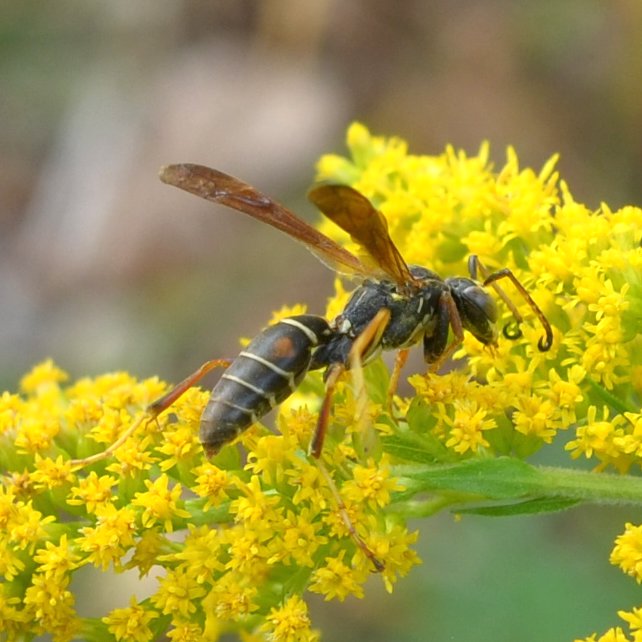
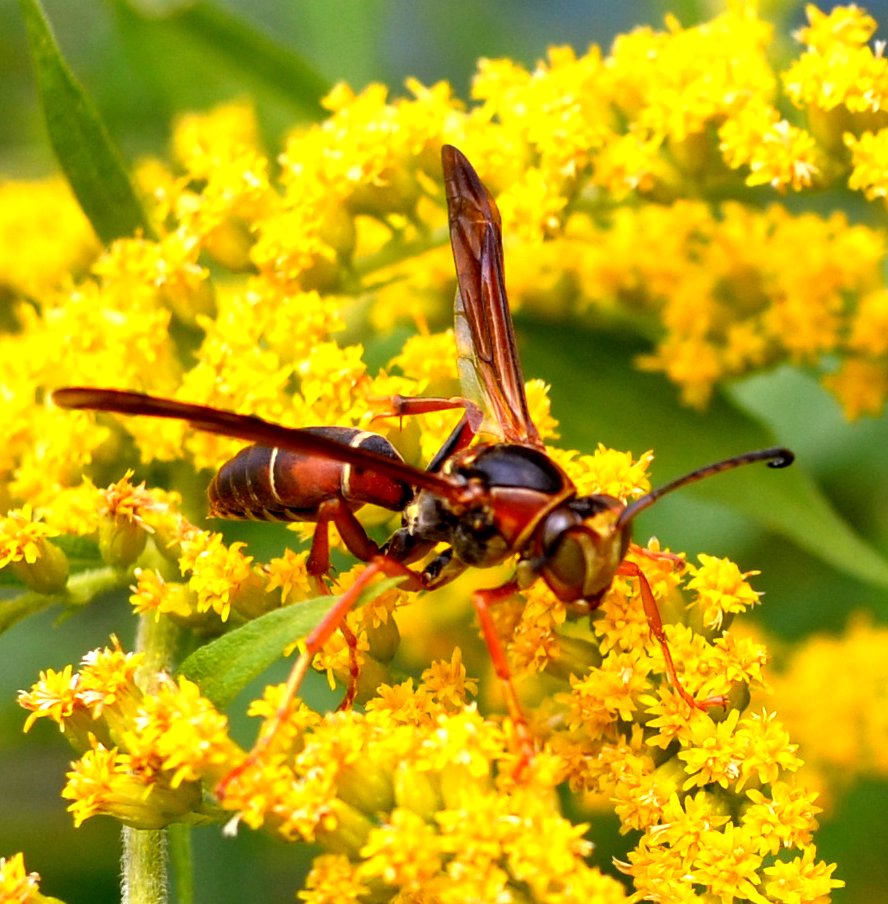
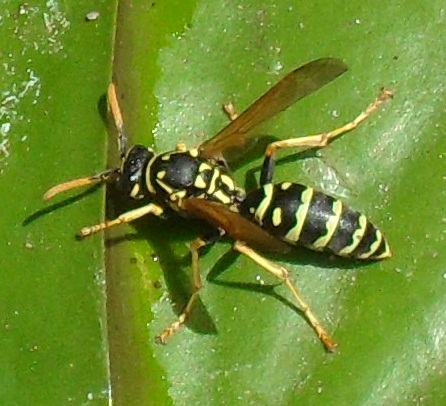
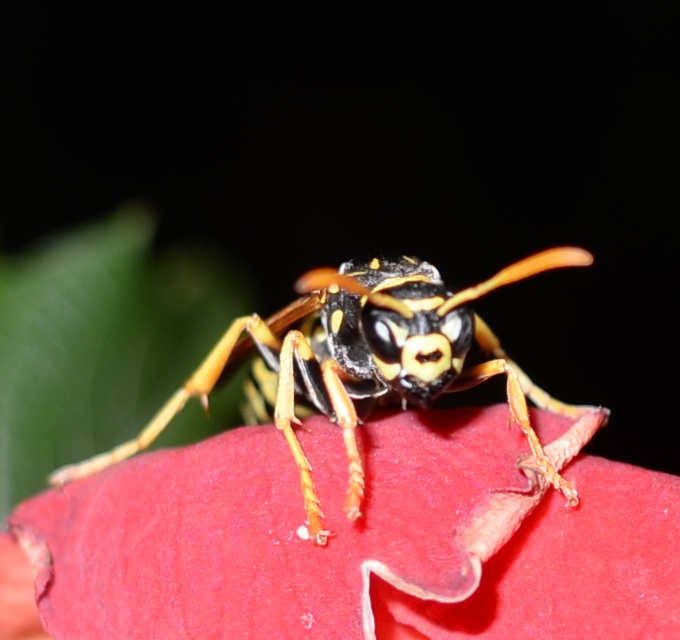
I think that I said last week that I had never seen a male Bee Wolf, Philanthus gibbosus. Well, now I think I have. The big deal was supposed to be that the male had a much bigger yellow mark on its face and now I think I have a photograph of that phenomenon. Here - Use this one. Next. I rather thought I'd not seen a female Eumenes fraternus, but a couple of days ago, she showed up. Compare her face with that of the male.

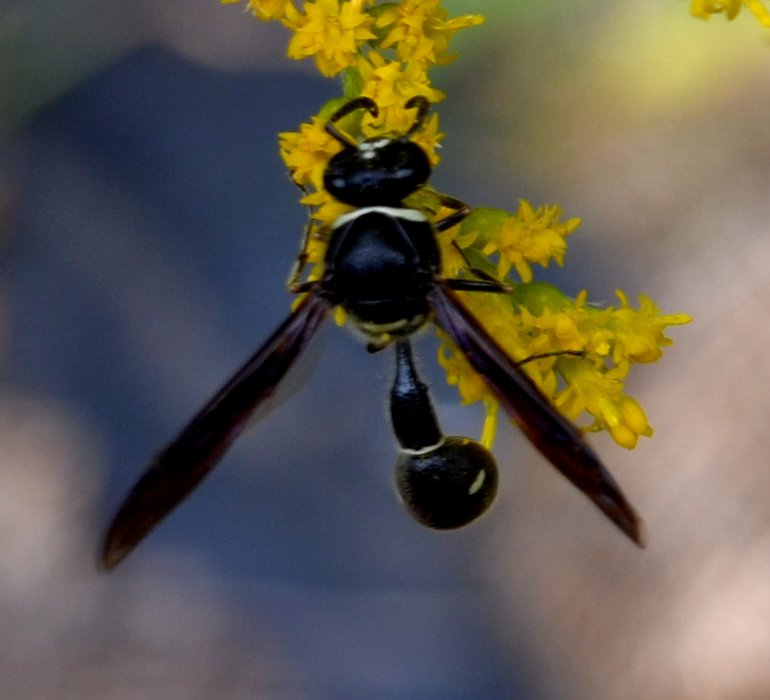
.jpg)
I'd thought we might not get a chance to see a bald-headed hornet this year. There had been one that seemed to keep just a mite away from me, but now the goldenrod has bewitched it and I got off three shots before it took off. I was showing a workman the big nest the other day and found another - a tiny one only about 3 inches in radius.
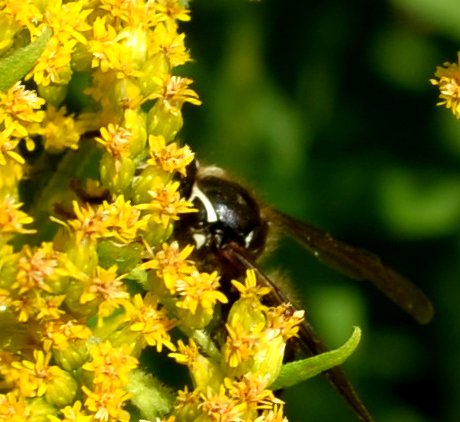

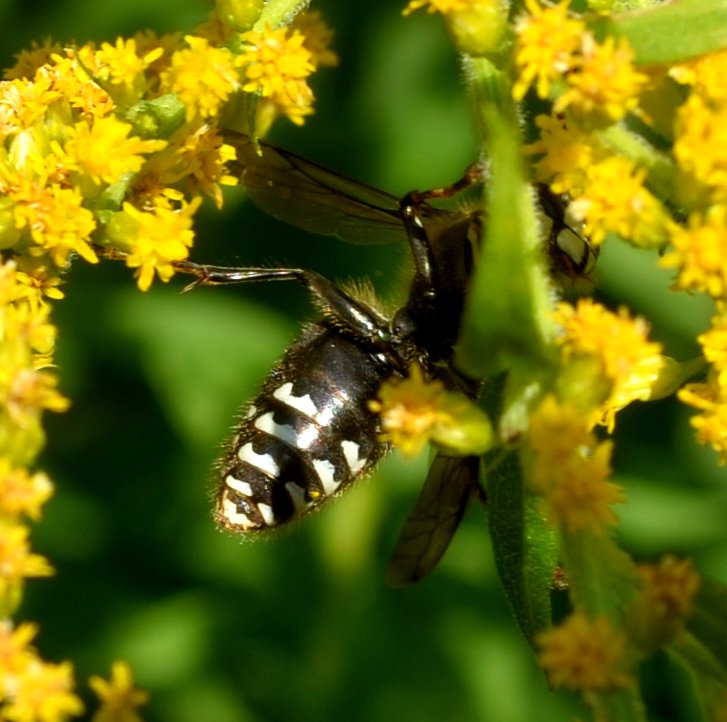
This first wasp is called a Chalcid wasp, by name of Leucopsis affinis. It has an ovipositor, like most of the ichneumon wasps, but this wasp carries her ovipositor curled lengthwise over her abdomen. If you click on its picture, you'll find that I have outlined where the ovipositor is stretched along the abdomen. Next is a blue-black wasp called the Blue-Black Spider Wasp, meaning that it carries live spiders to its nest as food for its babies. The last image is of a wasp called Ectemnius maculatus.
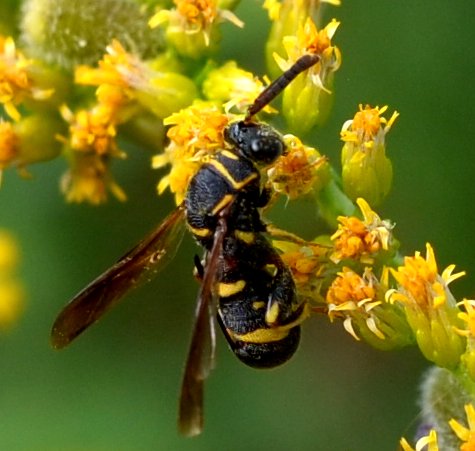
 9 12 17 1.jpg)
Here we have just a couple more wasps. First is an Ichneumon Wasp. It seems to be a male, because ones like this have nice-sized ovipositors if they are females. Second is most likely one of the Ancistrocerus genus, probably A. campestris. And last, this wasp is Cerceris clypeata, or Weevil Wasp.
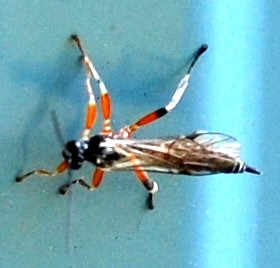
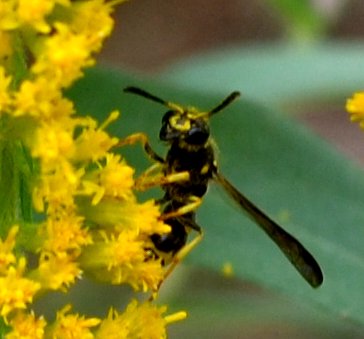
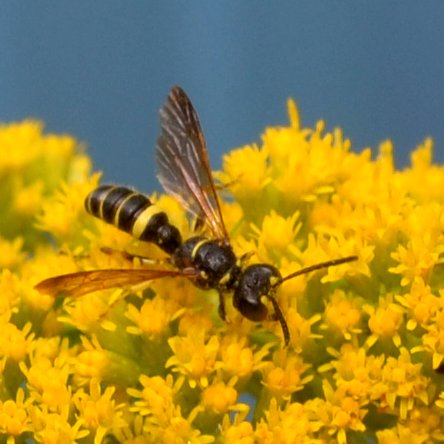 .
.
Surely it's time to show you some nice palate-cleansing flower pictures. First, that yellowish greenish water lily; Next, a mauve-flowered aster plant blooming beside the deck; The Japanese pink anemones showing off near the fence.
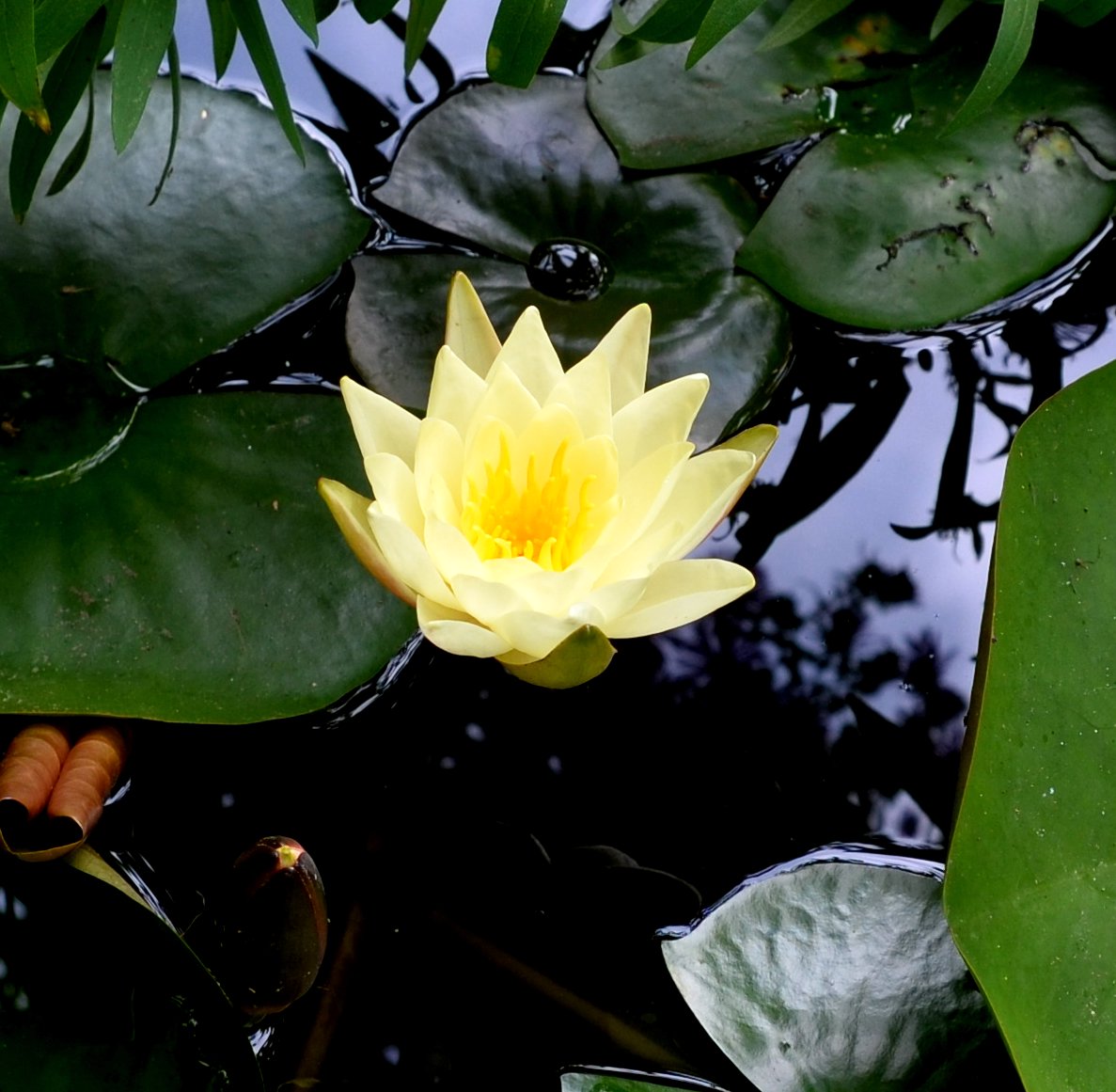
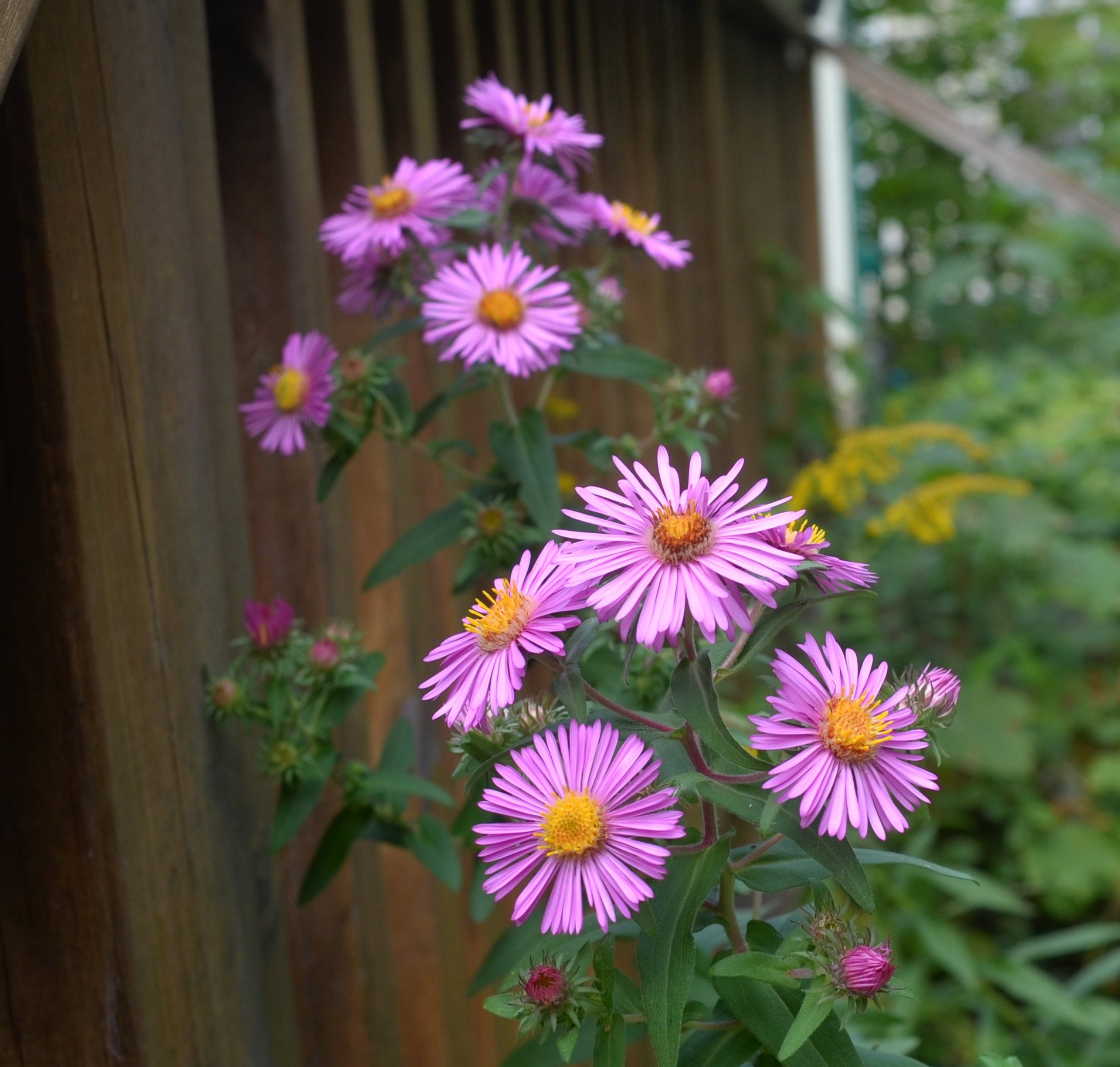
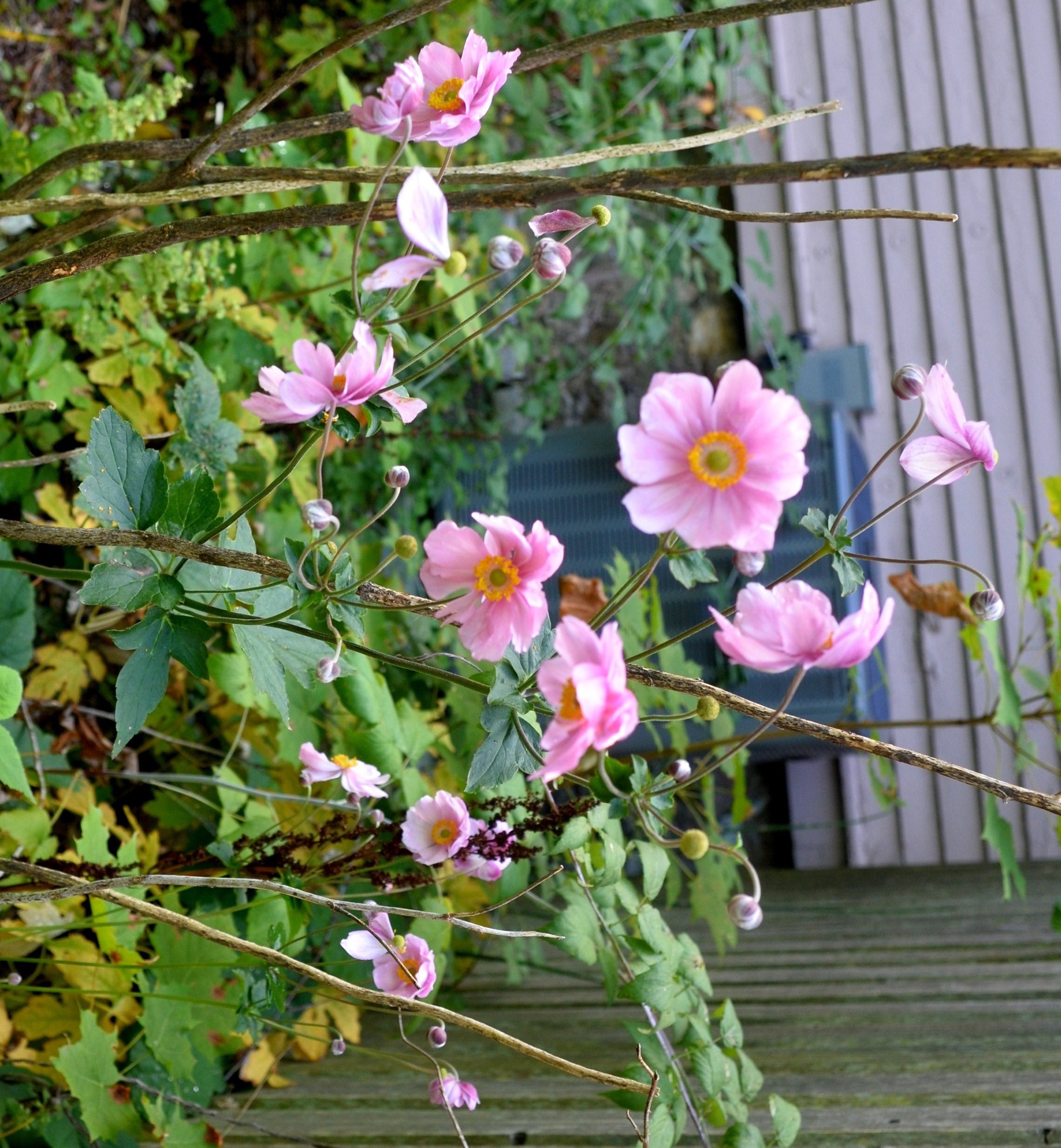
It was a very busy week. Tomorrow night is one of my literature study groups and so I have juggled all weekend finishing the blog and reading all weekend. But when I see the quantity of new creatures each week, I don't mind and hope you enjoy them as much as I do. See you next weekend!
Love, Martha
Back to September 10, 2017
Forward to September 24, 2017
Back to 2017 menu
Back to main menu
copyright Martha O'Kennon 2017





























































.jpg)




 9 12 17 1.jpg)





